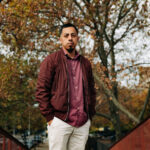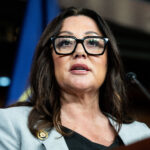America’s education system was a groundbreaking effort to help a growing nation thrive in the 19th century. Now, 200 years later, the world has changed; the horizon looks drastically different. Collectively, we need to redesign our education system to enable all of our children — and, by extension, our nation — to thrive today and tomorrow. “Horizon Three” or “H3” names the future-ready system we need, one that is grounded in equity serving learners’ individual strengths and needs as well as the common good. This series provides a glimpse of where H3 is already being designed and built. It also includes provocations about how we might fundamentally reimagine learning for the future ahead. You can learn more about the horizons framing here.
Over the years, I’ve often found myself trying to explain my work to my dad. Despite his genuine interest, his responses usually include a mix of head nods and “Hmmm… okay.” It’s clear that some of the nuances of my job don’t always translate well. But there’s one topic that always breaks through the confusion: public systems. My passion for systems sits in the education domain, and his — in transportation.
My dad spent most of his career working on logistics for high-speed trains, and he knows that effective public systems must be more than just functional—they need to be responsive, reliable, and aligned with the real needs of the people they serve. He knows strong systems are ones that people believe in, rely on, and come to love. Learning from work with communities around the world, he understands that equitable public systems must create opportunities for everyone, not just the lucky few, and how designing them with community, really matters.
He also understands that by the time a system starts to decay, it’s often too late—the public may have already lost trust in it and the institutions connected to it. That’s why he also values continual research and development, planning ahead, and sometimes building rail infrastructure years before an operational train route is established.
So, when I tell him that we need a new approach to education, that our public schools need to be a key part of that effort, and that the investment and R&D in their transformation is both essential and underway, he gets it.
We need systems that inspire hope.
What Do These Systems Look Like?
At Education Reimagined, our big bet is that education systems in Horizon 3 need to look a lot more like learner-centered ecosystems. We see the work right now as bigger than just improving individual schools; it’s about weaving the fabric of our communities back together. Upward mobility, especially for those furthest from opportunity, is deeply connected to education and community, therefore; these two things can no longer be divorced from one another. Yes, we must keep supporting learner-centered schools, but we also must create systems conducive for them to spread and reach all families. As Sam Chaltain describes it:
“Education Reimagined’s big bet is that the best way to impact American education writ large is not primarily by seeding singular schools (as important as that is), but by reimagining the larger organizing principle of each community’s commitment to its children—away from the sclerotic model of a ‘unified’ district, and towards the nascent notion of a truly ecological approach in which a community’s full wealth of existing resources—from its libraries to its public parks to its civic partners to, yes, its schools— are intentionally woven together with a new set of organizations, adult roles, and learning pathways to result in a more vibrant set of everyday experiences for young people that are relevant, fulfilling, and perhaps even fun.”
This vision emerged from the wisdom of many, including communities that have historically organized themselves in this way and honor that education must operate at the intersection of equity, ecology, economy, and culture. Collective Shift would describe this as, “responsive, reciprocal behaviors and relationships: between educators and students, between students, between school and families, between school and communities.”
More tangibly, ecosystems are:
- Dynamic and responsive. The future of education must rely on emergent strategy and cannot be prescribed. Ecosystems are designed to know and respond to each person and their community, and can readily address needs and take advantage of opportunities. As Dee Hock, founder and CEO Emeritus of VISA would say, they “embrace principles of living systems as a basis for organizing.”
- Anchored in holistic outcomes and human development. Ecosystems demonstrate a system that weaves together what we know about the holistic development of young people with what is relevant in young people’s lives today. Building on this foundation of strong relationships, well-being, belonging, and dignity, ecosystems also ensure each young person works towards meaningful competencies like quantitative reasoning, expressing ideas, and being able to read the world and grow in their mindsets, knowledge, and skills.
- Focused on regeneration and growth: Horizon 3 systems adapt and thrive over time and embrace a culture of growth, continually assessing and integrating learnings into how they operate. Regular refinement of practices and behaviors based on feedback is core to these systems’ flexibility and growth.
- Collaborative and connected. What if the strongest muscles in our education systems were collaboration and connection—rather than compliance and conformity? Trees form neural networks, sharing resources and relying on each other, knowing they can’t go it alone. As Kara Borbroff shares, education must do the same and, “share knowledge, models, and policy recommendations so that each community or local network isn’t reinventing the wheel.”
The good news is that there are already places proving this kind of system is possible.
Ecosystems Coming to Life
We need more than just visions — we need examples of how these systems operate in practice. At Education Reimagined, we are collaborating with partners in twelve diverse communities who are demonstrating proof points. These partners, among many others, are growing ideas in public, piloting education systems that push us to rethink the core operating system of school.
Learning Journeys Lead the Day. Like Reggio schools, Horizon 3 systems begin with what learners need, not a standard scope and sequence. Advisors and educators help construct learning journeys what we know helps young people develop with what matters most to them and their communities. Ecosystems enable more continuity in learning journeys, including when there might be pivots due to mental health needs, traumatic events, natural disasters, or simply a shift in the learner’s path. The work of Norris Academy and Da Vinci Rise exemplify this well, both examples of places that honor the realities of young people’s lives and work with them to build their learning journeys.
Expanded Educator Roles. In ecosystems, there is a broadened vision of who educators are, what they can contribute, and what roles they play. Educators can include mentors, local experts and artists, advisors, coaches, and community and family members. For instance, in Newport, Rhode Island, at FabNewport educators from the community engage young people in projects that connect them with their local environment, promoting academic and personal growth. At Big Thought, a range of experts, from marketers to artists, provide learning experiences and mentorship for Dallas youth.
Community-Based. Ecosystems embrace community partners, whether in-person or virtual, as core to learners’ experiences. Ranging in degree and frequency, learning happens in different community contexts. Take initiatives like Runway Green in New York City, which taps into the rich tapestry of local history and industry and will offer learners experiences in their community, including at a National Park and an oyster preservation organization. At Memphis Lab School, even the youngest learners spend at least one day a week at a partner farm and work to develop competencies while deepening their connections to the land.
The ecosystem approach is incredibly beneficial in rural areas where assets and resources might look different than in other settings. Take Mat Su Central in Alaska, where some learners live up to 100 miles away from the school, learners and families use an online platform to connect with opportunities, including experiences like helping engineers on the slopes in the winter to engaging in First Robotics challenges online and with local peers. A designated community liaison works with the learners and their advisors to weave everything together into meaningful learning journeys.
Relevant to Learner’s Lives Now and Longer Term Success. Ecosystems make real-world learning a consistent thread throughout learners’ experiences. In Columbus, Ohio, the Columbus EcosySTEM Initiative empowers students through hands-on STEAM experiences that bridge identity-building and real-world applications. Learners have frequent opportunities to explore different roles and professions. SparkNC, a regional effort in North Carolina, connects learners in SparkLabs across their interdistrict network with industry partners to engage in meaningful internships and real-world projects that enhance learners’ durable and tech skills.
These partners help us see glimpses of an entirely transformed system. They provide a view into what it looks like when a system is designed to serve learners now, and that also is working to understand what future tracks need to be built.
Full Steam Ahead
Young people are telling us, often by way of their own feet, that the current modus operandi of school isn’t working for them or their families. They need systems that see them as whole humans who are navigating a lot of complexity, seeking joy and love, and who desire life-sustaining skills and rewarding work to help them find meaningful pursuits and passions. Schools are an essential part of these systems, but they should no longer go it alone, trying to provide young people with all the resources and experiences they need in one building.
Let’s get to work. How can we create systems that prioritize connection, inclusivity, and adaptability? Together, we can help create ecosystems our young people and communities deserve. We can create systems that not only function but flourish.
This blog series is sponsored by LearnerStudio, a non-profit organization accelerating progress towards a future of learning where young people are inspired and prepared to thrive in the Age of AI – as individuals, in careers, in their communities and our democracy.
Curation of this series is led by Sujata Bhatt, founder of Incubate Learning, which is focused on reconnecting humans to their love of learning and creating.
The post A New Operating System for Public Education: Learner-Centered Ecosystems appeared first on Getting Smart.
Explore learner-centered ecosystems to transform education, enhancing adaptability, community involvement, and holistic student development.
The post A New Operating System for Public Education: Learner-Centered Ecosystems appeared first on Getting Smart. Equity & Access, Future of Learning, Learner-Centered, New Pathways, collaboration, community, equity, events, H3, mental health, mentorship, what if Getting Smart








